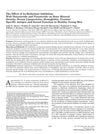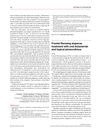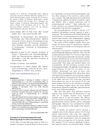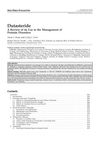Dutasteride
aka - GI198745
- Avodart
- dut
🛒 Where to find Dutasteride
Tracking 2 topical products and 15 oral products by companies like 24hreup, HealthyAreaStore, Inhouse Pharmacy, Minoxidil Express and OnlinePharmacy-BG. View all 17 products »Dutasteride, like finasteride, is a 5α-reductase (5AR) inhibitor that blocks the conversion of testosterone to dihydrotestosterone (DHT). However, dutasteride inhibits all three isoforms of 5α-reductase (types I, II, and III), achieving a reduction in circulating DHT levels of up to 98%, while finasteride only inhibits type II and III, resulting in a 65-70% reduction in DHT levels.
It is approved for the treatment of male androgenetic alopecia in South Korea and Japan, and studies have shown that it can induce hair regrowth in men more rapidly and to a greater extent than even the highest approved dosage of finasteride. Dutasteride is also used off-label in the treatment of female pattern hair loss.
Dutasteride was first patented in 1996 and initially described in scientific literature in 1997. The drug was developed to primarily treat enlarged prostates. After receiving approval from the FDA in November 2001, it was introduced to the U.S. market in 2002 under the brand name Avodart. Since then, it has been made available in numerous other countries, including some in Europe and South America. The patent for dutasteride expired in November 2015, allowing for the production of generic versions of the drug.
Dutasteride is sometimes used as a component of hormone therapy for transgender women in combination with an estrogen and/or another antiandrogen such as spironolactone. It may be useful for treating scalp hair loss or in those who have issues tolerating spironolactone.
Dutasteride has an oral bioavailability of about 60%, which is the percentage of a drug that is absorbed into the bloodstream when taken by mouth.
Peak blood plasma levels occur 2 to 3 hours after taking it.
Dutasteride can be found in semen, but at low levels that do not significantly affect a sexual partner's DHT levels.
The drug is mainly metabolized in the liver by an enzyme called CYP3A4, resulting in three major active metabolites: 6'-hydroxydutasteride, 4'-hydroxydutasteride, 1,2-dihydrodutasteride.
Dutasteride has an extremely long elimination half-life of about 4 to 5 weeks. This means it takes a long time for the drug to leave the body, and its effects can last for an extended period.
The elimination half-life of dutasteride is even longer in elderly people, making it important to consider age when determining the proper dosage and frequency.
Because of its long half-life, dutasteride takes 5 to 6 months to reach steady-state concentrations in the body.
Dutasteride is mainly eliminated from the body through feces (40%) as metabolites. A smaller portion (5%) is eliminated unchanged in the urine.
Mesotherapy
Dutasteride mesotherapy involves the direct injection of dutasteride into the scalp. The goal of this treatment is to deliver the medication directly to the hair follicles. In mesotherapy, a series of microinjections are administered to the scalp using a specialized device. The treatment is typically performed in multiple sessions over several months.
Mesotheraputic dutasteride is considered an alternative to oral dutasteride and has gained popularity due to its targeted delivery and potential for fewer systemic side effects. It was once believed that systemic absorption would be high due to the vascularity of the scalp, but it seems like this isn't the case. The high molecular weight of dutasteride is thought to be part of the reason it has trouble going systemic after injections.
Mesotherapy is fairly popular in Europe and hasn't gained much traction in the US.
Compared to Finasteride
Several studies have found that dutasteride is more effective in promoting hair regrowth and slowing down hair loss in men with androgenetic alopecia (male pattern baldness) compared to finasteride. This superior effectiveness is attributed to the more complete inhibition of DHT production within hair follicles.
What downsides are there compared to Finasteride?
Higher Risk of Side Effects: Dutasteride is more potent in inhibiting DHT production than finasteride, which can lead to a higher risk of side effects such as sexual dysfunction (including erectile dysfunction and decreased libido), breast enlargement, and depression.
Longer Half-Life: Dutasteride has a longer half-life (about 4 to 5 weeks) compared to finasteride (5 to 8 hours), meaning it stays in the body longer. This can prolong the duration of side effects, even after discontinuing the medication.
Limited Approval: Dutasteride is not FDA-approved for the treatment of male pattern baldness (androgenetic alopecia) in the United States, unlike finasteride. It is, however, approved for this use in South Korea and Japan.
Pregnancy Risks: Both dutasteride and finasteride are contraindicated in pregnant women due to the risk of birth defects in male fetuses. However, the longer half-life of dutasteride means it remains in the body longer, potentially increasing the risk if a woman becomes pregnant after exposure.
Lack of Long-Term Studies: There are fewer long-term studies on the safety and efficacy of dutasteride for hair loss compared to finasteride, making it less established as a treatment option
Research
20 / 1000+ resultsresearch Marked Suppression of Dihydrotestosterone in Men with Benign Prostatic Hyperplasia by Dutasteride, a Dual 5α-Reductase Inhibitor

research The Importance of Dual 5α-Reductase Inhibition in the Treatment of Male Pattern Hair Loss: Results of a Randomized Placebo-Controlled Study of Dutasteride Versus Finasteride

research The Effect of 5α-Reductase Inhibition with Dutasteride and Finasteride on Semen Parameters and Serum Hormones in Healthy Men

research A Randomized, Active- and Placebo-Controlled Study of the Efficacy and Safety of Different Doses of Dutasteride Versus Placebo and Finasteride in the Treatment of Male Subjects with Androgenetic Alopecia

research Efficacy, Safety, and Tolerability of Dutasteride 0.5 mg Once Daily in Male Patients with Male Pattern Hair Loss: A Randomized, Double-Blind, Placebo-Controlled, Phase III Study

research The Effect of 5α-Reductase Inhibition With Dutasteride and Finasteride on Bone Mineral Density, Serum Lipoproteins, Hemoglobin, Prostate Specific Antigen, and Sexual Function in Healthy Young Men

research Frontal Fibrosing Alopecia: Treatment with Oral Dutasteride and Topical Pimecrolimus

research The Efficacy and Safety of 5α-Reductase Inhibitors in Androgenetic Alopecia: A Network Meta-Analysis and Benefit–Risk Assessment of Finasteride and Dutasteride

research Treatment of Postmenopausal Frontal Fibrosing Alopecia with Oral Dutasteride

research A Model for the Turnover of Dihydrotestosterone in the Presence of the Irreversible 5α-Reductase Inhibitors GI198745 and Finasteride
research Discovery and Clinical Development of Dutasteride, a Potent Dual 5α-Reductase Inhibitor

research Persistent Erectile Dysfunction in Men Exposed to 5α-Reductase Inhibitors, Finasteride, or Dutasteride

research Preparation and Characterization of Dutasteride-Loaded Nanostructured Lipid Carriers Coated with Stearic Acid-Chitosan Oligomer for Topical Delivery

research Human Type 3 5α-Reductase Is Expressed in Peripheral Tissues at Higher Levels Than Types 1 and 2 and Its Activity Is Potently Inhibited by Finasteride and Dutasteride

research Dutasteride

research Early Antiandrogen Therapy With Dutasteride Reduces Viral Shedding, Inflammatory Responses, and Time-to-Remission in Males With COVID-19: A Randomized, Double-Blind, Placebo-Controlled Interventional Trial

research Mesotherapy Using Dutasteride-Containing Preparation in Treatment of Female Pattern Hair Loss: Photographic, Morphometric and Ultrastructural Evaluation

research Dutasteride Improves Male Pattern Hair Loss in a Randomized Study in Identical Twins
